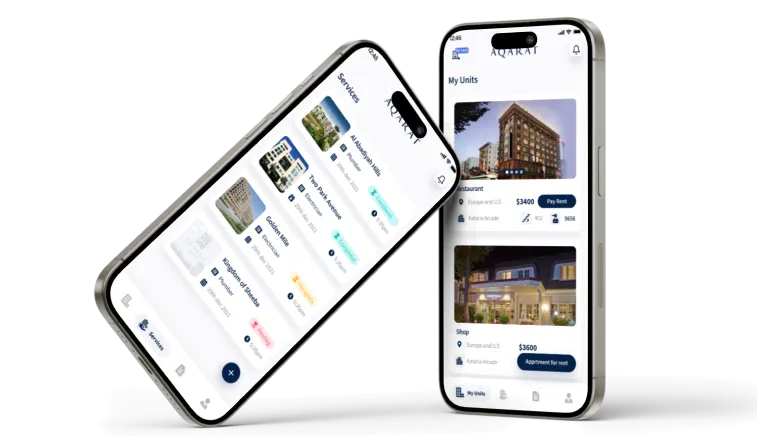Aqarat
Aqarat is an app that the Kuwait Real Estate Company developed for property managers and tenants. The app is useful for managers who need an easier way to manage their properties. The app works on Android phones and focuses on keeping things simple. Rent can be paid inside the app, and receipts are stored for later use. Maintenance requests can be raised with a photo and sent to the manager immediately. There is also a chat tool to keep both sides in touch without needing emails or calls. Documents like lease agreements are saved in the app so users can find them easily. The app makes everyday tasks easier for both tenants and property owners. Everything is designed to be quick to use without too much effort. Aqarat was built to help people manage property without stress.
Eager to Use our Service?
Let’s discuss your ideas and see what our team can do for you.

Challenges
Building an app that helps with property tasks meant solving a few real problems. One of the first was adding rent payments that felt safe and easy to use. The team had to protect sensitive details and ensure money moved correctly. Another challenge came with repairs. Users had to be able to take a photo and send it without the app slowing down. The system also had to ensure the manager could see the job and track its handling. Aqarat needed to support fast replies, which meant adding live chat without long delays. On top of all this, the screens had to stay clean and not confuse people. Tenants and managers need the app to be clear and without many steps. Balancing these parts took planning and time. It helped make the app stronger and more useful.
TECHNOLOGIES WE USED
- Flutter
- Dart
- Figma
Our Approach
How We Built the App
We chose Flutter so the app could run smoothly on different phones. Dart was used to keep the code neat and make changes easier. The team created screens that opened fast and kept only the user’s needs. For rent, we added a payment tool that worked with local banks and followed all rules. When someone makes a payment, they get a record that can be checked anytime. We built the repair form with a photo option so the manager knows what is wrong. Each screen was tested for load time and how fast it responds. Every part of the flow was short, so the app never feels slow.How We Designed for Daily Use
We used Figma to plan the layout and fix any parts that felt hard to use. The home screen was built to show the main tools at a glance. Rent, repairs, and documents are placed where people can spot them without a search. The design is clean, and every label uses common words. Test users said they liked how fast they could get things done. When someone taps on chat, the system opens immediately with no extra loading time. Icons were kept simple so users do not get confused. If someone needs to return, the screen always has a clear button. We did not add extra steps where they were not needed.How We Keep It Running
The app goes through regular updates to stay fast and error-free. Our team looks at feedback and works on new fixes each month. We also use reports to see if any part of the app slows down. If a user has a problem, they can reach out inside the app and get help. Before the full version goes live, new features are tested first with a small group. If a feature does not work well, we change or remove it. We refresh listings often so the app stays current. This helps everyone trust what they see. We also keep the app light so it runs well even on older phones.Our Solution
Linked safe payment tools to allow smooth rent transfers
Used Figma to design clean screens for everyday use
Ran updates often to fix bugs

 Blazor
Blazor
 Angular
Angular
 ASP.NET Core
ASP.NET Core
 NodeJS
NodeJS
 React Native
React Native




 60+
60+